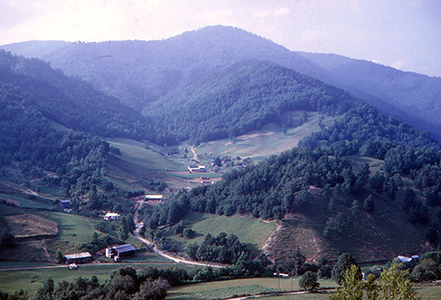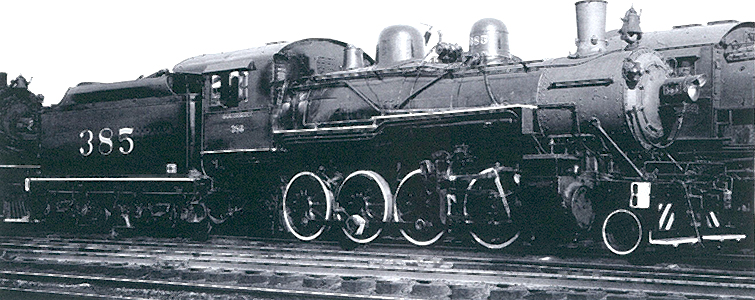
Copyright 2010 by Steven P. Hepler

At the turn of the 21st Century, a nearly century-old former Southern Railway Steam Locomotive was languishing away her days, hidden from public view in a remote, industrial back corner of a huge facility in Harrison, NJ owned by J. Supor & Son Trucking & Rigging Co., Inc. If machines like steam locomotives possess a soul and have “thoughts”(and some reflective people say they surely do), this particular locomotive must have sadly wondered why she was nearly forgotten and allowed to decay to a point where there was little hope of a return to any semblance of her former glory.
It was this very locomotive, affectionately known as “Old Number 385”, which had thrilled untold hundreds of thousands of people as the “star attraction” of the Morris County Central Railroad from 1965 until she made her very last run under steam in 1978. The MCC was New Jersey’s first “Standard Gauge” historic preservation railroad and was founded by the late Earle Richard Henriquez-Gil, Sr., of Parsippany, NJ.


No. 385 was originally built by the Baldwin Locomotive Works of Philadelphia, PA in 1907 for the Southern Railway (SR). She and 24 other members of her unique class (Nos. 378 – 402) joined the ranks of SR’s growing fleet of 2-8-0’s already in service. The new engines were renowned for their large size, power and speed. Conceived for SR fast-freight service, No. 385 is a Class H-4, 2-8-0 Consolidation-type locomotive, weighing 120 tons in full working order. The locomotive has a two-wheel “leading truck” and eight, 57-inch coupled driving wheels that enabled engines of her type to pull early-1900’s trains with ease on both level track and mountain grades. No. 385 is a classic example of early – 20th Century American locomotive design and craftsmanship. Of the 25 Southern H-4’s built in 1907, only No. 385 and No. 401 (located at the Monticello Railway Museum in Illinois) survive.



The very first Consolidations were built in 1866 and they continued to be produced by locomotive firms well into the 1920’s. By the time the final 2-8-0’s were constructed in the 1940’s over 33,000 had been in use on American railroads…more than any other type of steam locomotive built in this country. Eventually, Southern Railway came to the point where it owned the largest fleet of 2-8-0’s in the South.


For many decades, the Southern employed their 2-8-0’s throughout their vast system. They were used everywhere and early on, were the main freight power on SR’s Washington, D.C. – Atlanta, GA mainline. Much of the cotton, tobacco and other agricultural products of the Carolinas, Georgia and Florida went to market behind Southern 2-8-0’s. They hauled Appalachian coal and Birmingham steel. Late in their careers, they handled countless mixed and local freight trains throughout the Deep South during the final years of the “Jim Crow” era (racially segregated passenger accommodations). Even today, there remains a dwindling number of aged farmers and mountain dwellers who recall the days when a local Southern way freight pulled by a classic Consolidation would invade their rural way of life and made the Blue Ridge and Appalachia ring with their tumultuous smoky voices.


For over 40 years, No. 385 could be found on the head-end of all types of SR mainline freight trains. By the late-1940’s she continued to “earn-her-keep” pulling smaller, local trains as the larger, long-distance ones were being led by new, powerful diesel locomotives.


No. 385’s story is surely a charmed one, having been saved from the scrapper’s torch time and again throughout her long life. 385 was one of a few lucky steam engines that was still in service, maintained and rebuilt at SR’s sprawling “Spencer Shops” at Spencer, North Carolina in 1950. With few exceptions, the rest of the Southern’s well-maintained stable of beautiful steam-powered locomotives were quickly scrapped following the end of all SR steam operations in 1953.

